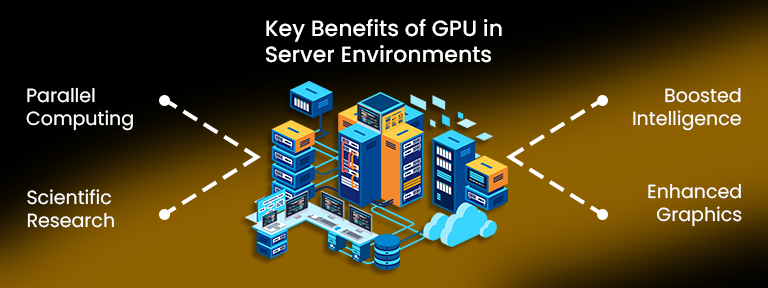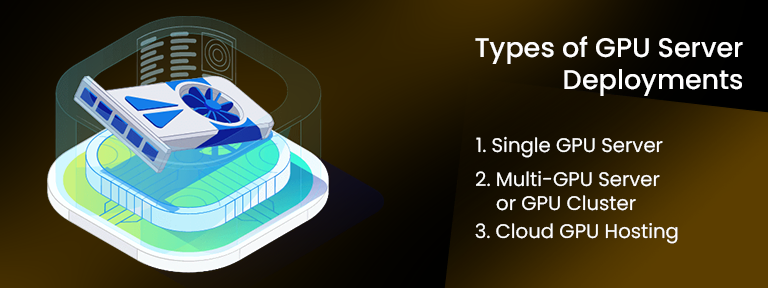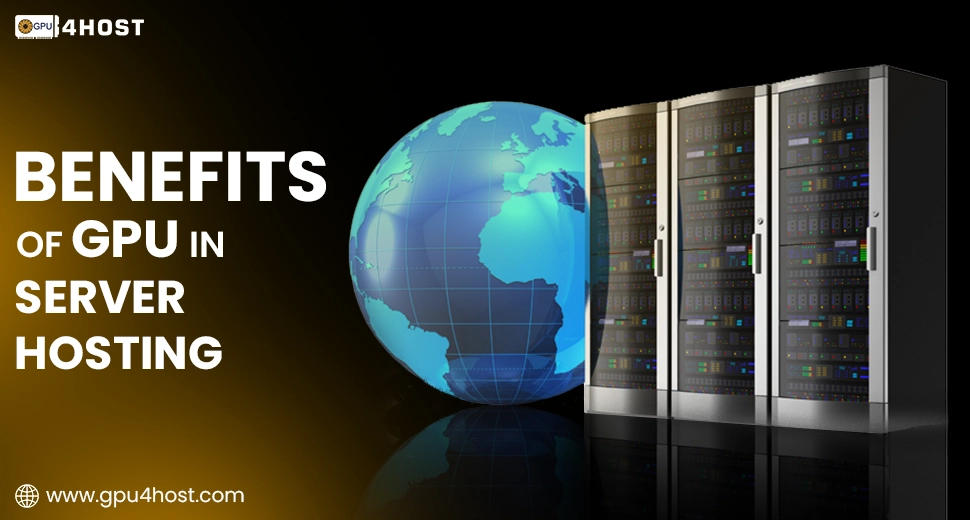Benefits of GPU in Server Hosting: Do You Actually Need One?
As industries grow and data-based applications demand increases, standard CPU-powered servers are struggling a lot to keep up. Ranging from AI model development to 3D graphics rendering and real-time analytics, the need for quicker processing is driving a change in server architecture. This brings us to the query: Do servers genuinely need GPUs? To answer that question, we need to check out the benefits of GPU technology and how it improves server performance across some real-world use cases.
What Is a GPU & How Does It Differ from a CPU?
A GPU (Graphics Processing Unit) is an expert processor engineered especially to manage many tasks in parallel—mainly those involving high-level mathematical tasks. Apart from CPUs, which are enhanced for sequential processing, GPUs can manage thousands of threads at the same time.
For example, an agency rendering many high-resolution video tasks can cut rendering time from hours to a few minutes with the help of a GPU server rather than a CPU-only setup. This translates into quicker delivery for customers and increased productivity for various teams.
When added into server environments—often referred to as a GPU server—GPUs offer a significant boost for tasks that need more than just general computing.
Key Benefits of GPU in Server Environments

Let’s check out the most impressive benefits of GPU for organizations, researchers, developers, and content creators, with real-world use cases that prove why GPUs really matter.
1. High Parallel Processing
GPUs are engineered to run multiple tasks at once, making them a perfect choice for advanced computations like data modeling, real-time analytics, and more.
Real-World Situations: A finance organization checking different market patterns utilizes a GPU server to easily process high-frequency trading data in no time—a task that would take a few minutes with a standard CPU server, potentially leading to missed trading opportunities.
2. Accelerated AI & ML
AI tasks like AI-based model training and deep learning need high processing power. An advanced AI GPU—such as the Nvidia A100—can significantly decrease additional training times and inference issues.
For Example: A business building a customer recommendation engine decreased its training time from 12 hours to all under 90 minutes with the help of a GPU dedicated server. This helped the whole team iterate quickly and deploy all updates on schedule.
3. Scientific Computing & Research
Scientific simulations, such as climate modeling, genomic sequencing, and more, take advantage of the benefits of GPUs. These calculations generally need millions of processes per second, which GPUs manage successfully.
Use: A genomics lab decreased DNA sequence alignment time from 3 days to just 6 hours with a GPU cluster, boosting its research pipeline.
4. Improved Graphics Rendering & 3D Processing
Industries like modern game development, powerful architecture, and animation rely mainly on rendering challenging 3D visuals. A GPU server exceptionally cuts rendering times and enhances workflow fluidity.
Industry Insight: A 3D design studio utilized GPU hosting to run their complex rendering engines in the cloud, reducing costs and allowing remote teams to work together in real time—something their old on-premises CPU infrastructure couldn’t easily support.
When Do Servers Need GPUs?
Not every single task demands GPU acceleration. For instance, simple web hosting or email servers won’t get advantages from GPUs. However, the benefit of GPU is understandable in different situations, such as:
- AI-based model training and deployment
- Big data analytics
- Modern gaming or 3D rendering
- Streaming services and video transcoding
- Medical imaging and diagnostics
Types of GPU Server Deployments

1. Single GPU Server
Best for new businesses or organizations getting started with AI, ML, data analytics, or 3D rendering. Provides improved performance at a lower cost.
2. Multi-GPU Server or GPU Cluster
Perfect for advanced research, AI model training, or rendering farms. With the help of a GPU cluster, tasks are distributed across many GPUs, allowing high parallelism.
3. Cloud GPU Hosting
GPU hosting lets both developers and teams easily spin up GPU assets on demand without investing heavily in hardware. Ideal fit for temporary tasks, scalable deployments, or testing.
The Power of Nvidia A100 & Modern GPUs
Modern GPUs such as the Nvidia A100 are purpose-engineered for advanced AI, big data analytics, and high-performance computing tasks. Key benefits of GPU, such as the A100, include:
- Multi-instance GPU (MIG) for task isolation
- High memory bandwidth for quicker data output
- Tensor Core boost for deep learning
Real-World Use Case: An e-commerce company utilized a GPU dedicated server along with the Nvidia A100 to serve product recommendations to millions of users, improving user experience and increasing sales.
Selecting the Right GPU Server Provider
- Hardware Options: Opt for the availability of robust GPUs such as the Nvidia A100 or A40.
- Customization: Make sure that server specifications can be customized as per your application.
- Flexibility: Can you easily scale from a solo GPU to a GPU cluster?
- Support: 24/7 expert monitoring and tech support are must-haves.
- Affordable: Always go for transparent pricing with zero hidden costs.
Pro Tip: Platforms such as GPU4HOST provide scalable, cost-effective GPU hosting options with enterprise-level GPUs, helping businesses to experiment and adjust as per demand.
Final Considerations Before Investing in a GPU Server
Before migrating to the GPU infrastructure, it’s necessary to check your present tasks:
- Are they parallelizable?
- Is your software enhanced for GPU processing (for example, PyTorch, TensorFlow)?
- Are your task deadlines and performance demands constrained by present hardware?
Bonus Tip: Start small. Utilize cloud GPU hosting from service providers such as GPU4HOST to benchmark all your applications before capitalizing heavily on a full-scale GPU server.
Final Thoughts
The benefits of GPU are not only related to quicker computations—they are all about smarter infrastructure, decreased time to market, and harnessing the power of next-generation technologies. Even if you are a data scientist, researcher, designer, or developer, switching to a GPU server can provide real-world benefits that CPUs alone can’t match.
From AI inference and advanced design to big data analytics, a GPU dedicated server or GPU hosting solution can transform how you work, practically and cost-effectively. Always begin with a trial on GPU4HOST and get the real-life advantages of GPU-based computing now.


